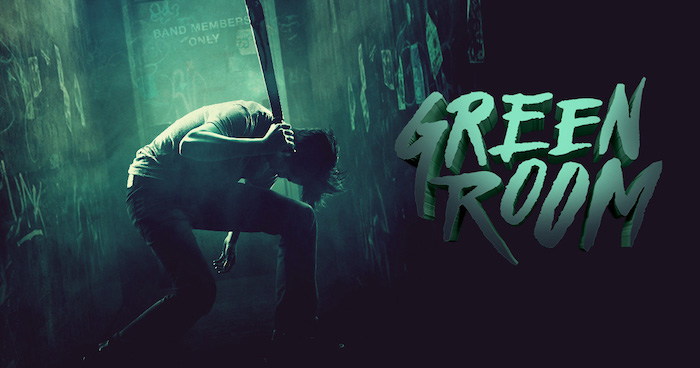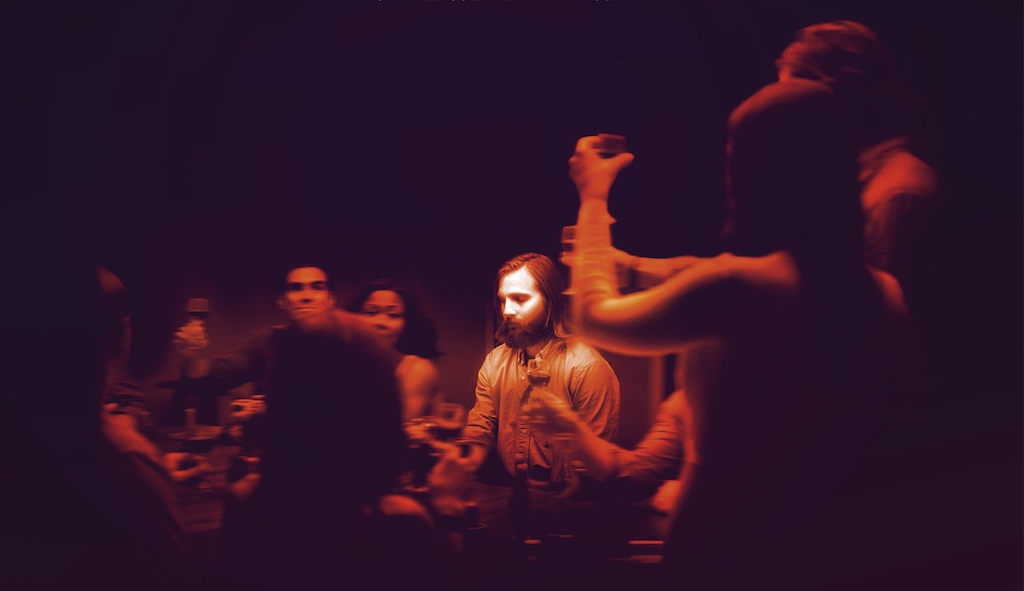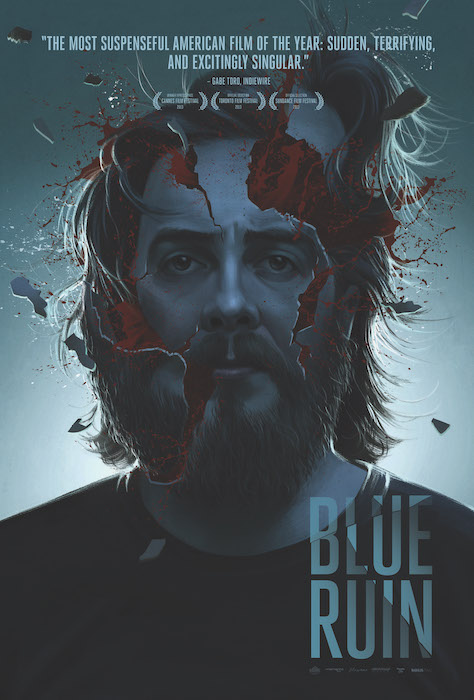Green Room

Fuck yeah, Jeremy Saulnier!
I waxed lyrically about Blue Ruin, his crowd-funded movie about a pudgy, milquetoast drifter on a meandering pursuit of revenge. A movie of gradual but inexorable acceleration, Blue Ruin took its time to gather momentum, pushing forward, going from shambling to walking to stomping until its characters' actions could not be stopped.
It was a critical and commercial success, making almost a million dollars. It may not sound like a lot, on this day when even a mediocre comic book movie can bring in hundreds of millions, until you realize that they produced it with a $37,000 Kickstarter campaign.
Its success allowed Saulnier to have his pick of projects, this time with a proper budget. He chose to make Green Room, his own script, a thriller about a punk band trapped by a gang of white supremacists after one of the band members witnesses something he shouldn't have.
Green Room is pure punk rock. Aggressive. Fast paced. With a jagged edge. It throws out conventions, establishing shots, transitions. It's in a hurry to get to the point.
Got expectations? Fuck them. Off they go.
An audience of skinheads wants something to stomp to. They get Nazi Punks Fuck Off.
We get teased to the Aint Rights' (our heroes' band) own brand of Sabbath-punk. We get a lyrical, slow-moving dream-ballet of glinting sweat and dancing brutes instead.
We see camaraderie. We don't hear it.
Our heroes say they're going to party, we hear a few bars of a record, then we cut to the morning after. We cut away from their interview. We cut to the end of a song.
Cut. Cut. Cut.
Until it gets to the point.
Then it doesn't blink until it's over.
The movie starts as then the band wakes up inside their van. They veered off-course into a cornfield in the middle of the night. Or so they guess, at least, considering their circumstances. They were all too hammered to remember.
They're Tiger, the singer and true punk; Reece, the drummer hot-head; Sam, the guitar player, den mother, and organizer; and Pat, the bass player who seems to have an idea of who he is but can't articulate it.
A gig they'd gone 90 miles out of their way for gets canceled. They're left with $24 – barely enough for a tank of gas to get back home. The promoter for the canceled gig, who's just as much a kid as they are, hooks them up with a paid performance at a clubhouse in the woods.
“Mostly boots and braces down there”, is how he describes it. Just so they know.
“Skins?”, asks Tiger, before dismissing the concern. “There's some at every show”.
The gig pays and it fits their style. They want to keep their concerts up close and personal. The Aint Rights are happy to tell anyone to shove it, including a barn full of skinheads. They thrive on playful aggression. They want texture, want to be there for effect, chase that energy that can't last.
They rock their set.
After they've played and collected, Pat, the insecure bass player (played with a trembling touch by Anton Yelchin), goes back to the green room to pick up their communal mobile phone.
It looks like a crime scene. A weeping girl asks for help.
It all goes to hell.
They end up locked in the green room, guarded by a goon, unsure if the Amber – the witness Pat saw weeping and who is now cooped up with them – is even on their side. With the calculating but mercurial way that Imogen Poots plays Amber, I wouldn't trust her either.
They get their aggression. Barricading themselves against an army of armed thugs, it won't get more up close and personal. Boy, do they get their texture. And they get their cuts.
I called it a thriller. That's wrong. Worse, it's a piddling description. Green Room is a mimetic horror movie. Events come slashing out of nowhere. I cringed more times than I counted. Once I bolted, straight up, because of a deliberately brutal solution to a human Gordian Knot. The moment felt like it lasted a minute. The shot was a couple of seconds long.
It's not only the violence that's horrifying. Once the skinheads have the band cornered, it falls to Gabe (Macon Blair, from Blue Ruin) to figure out what to do. Gabe is not a stomping boot himself – he's just the type of efficient bureaucrat without whom evil couldn't thrive. He gets things under control, provides a credible cover story, and summons their leader, Darcy Banker.
Patrick Stewart's Darcy is a taut, inhuman snake-person. When Darcy tries to get the band to come out, his voice is as persuasive as it is grating. It grinds through their barriers, oozes over them, corrodes their will. His tone carries just enough meaning, leaves no doubt as to who he is.
His monster is as spare as the movie is. Most of the action takes place in a shed, other than the initial ten minutes of “getting there.” A room, a hallway, a stage, an exterior. No centimeter is wasted. And as the band tries to break out, the few meters to the nearest window will feel like kilometers.
Both for them and us.
(Originally published on Filmsnark, my old blog)
#greenroom #jeremysaulnier #maconblair #antonyelchin #imogenpoots #patrickstewart #joecole

